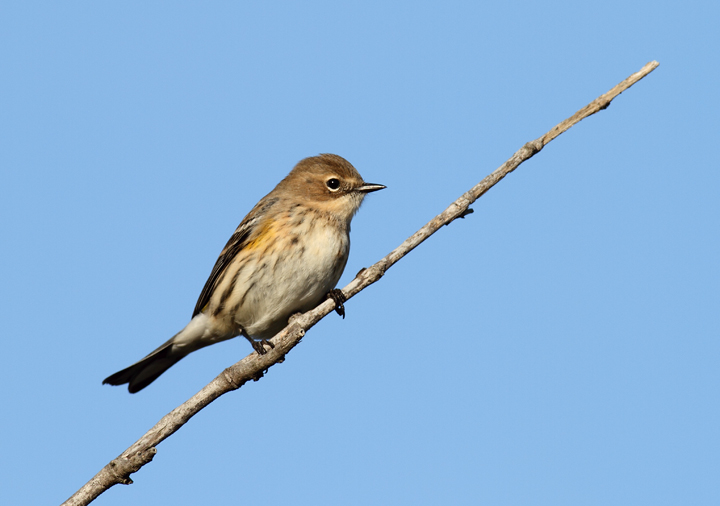Yellow-rumped Warbler (Dendroica coronata)
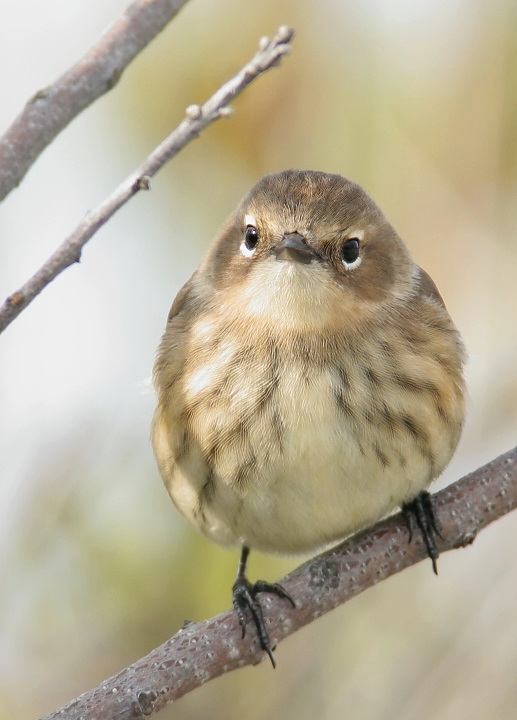
Above and below four: Several of the thousands of Myrtle Warblers that had recently arrived on Assateague Island (10/22/2006).
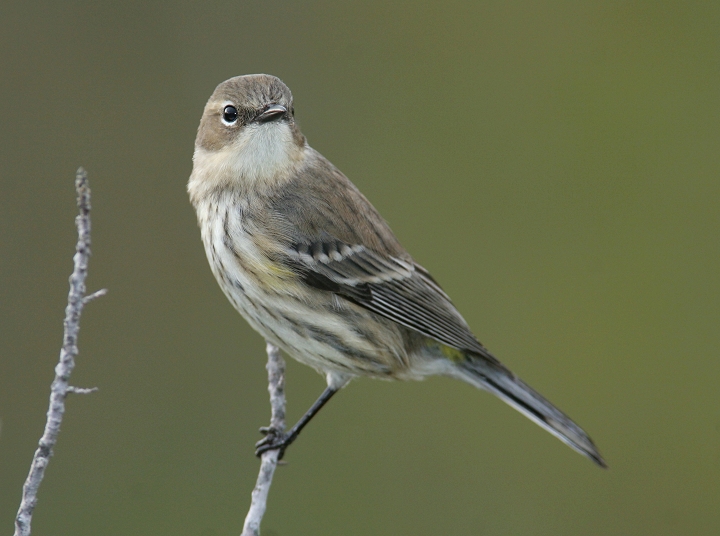
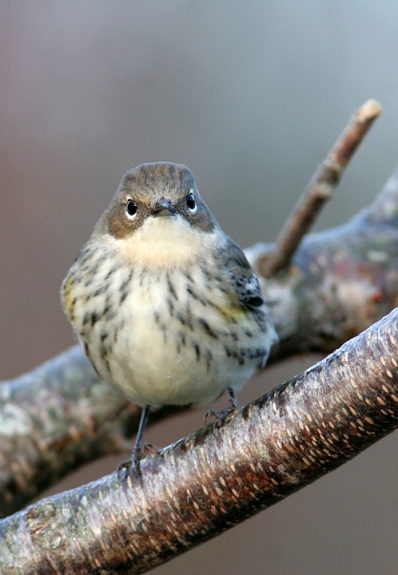
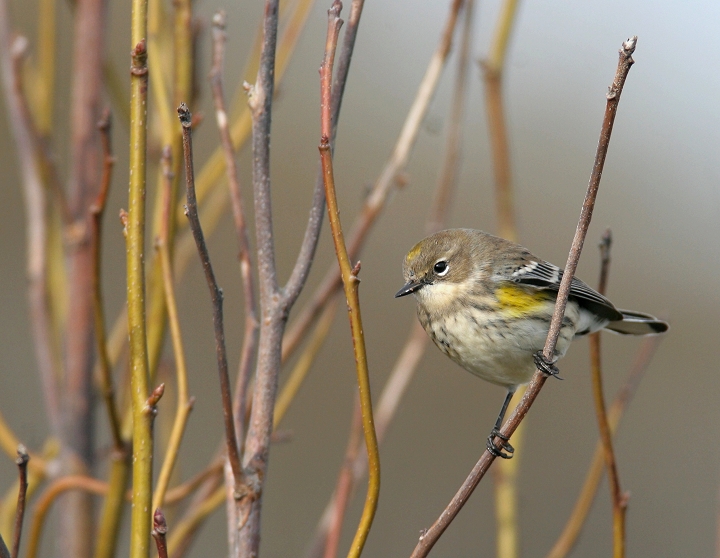
Below: Feeding on the energy-rich fruit of the Northern Bayberry allows Myrtle Warblers - and other species such as Tree Swallows - to winter further north than relatives that insist on bugs and bugs alone.
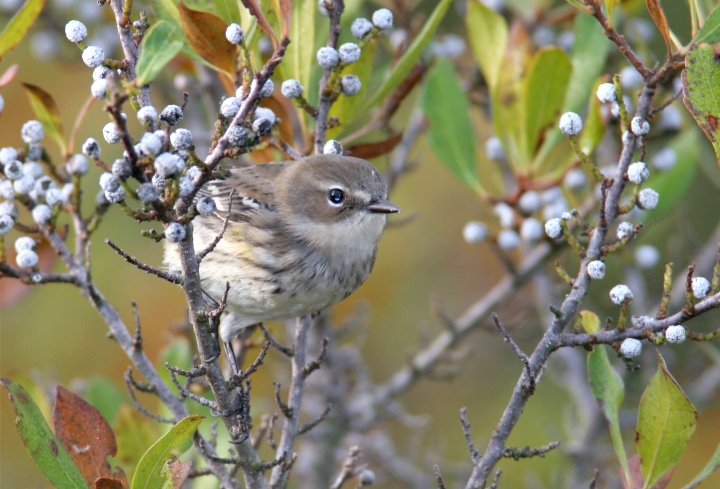
Below: A Myrtle Warbler at Point Lookout SP, St. Mary's Co., Maryland (10/7/2007).
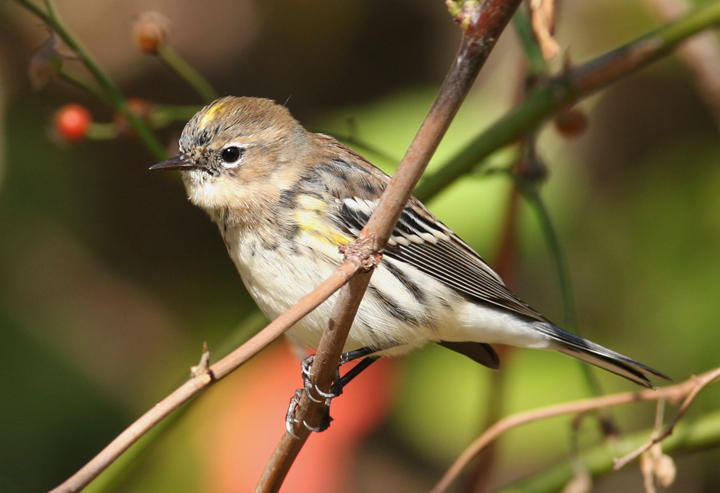
Below: Photographed in Carroll Co., Maryland (10/8/2006).

Below: Photographed at Blue Mash Nature Trail, Montgomery Co., Maryland (11/4/2005).
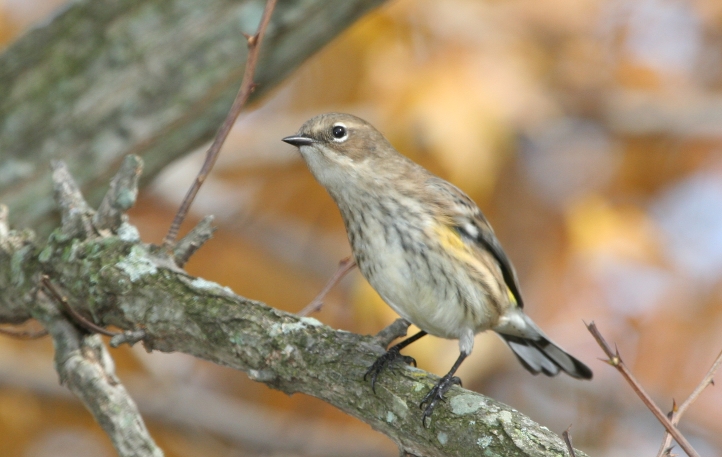
Below: A Myrtle Warbler molting into breeding plumage in Charles Co., Maryland (4/8/2007).
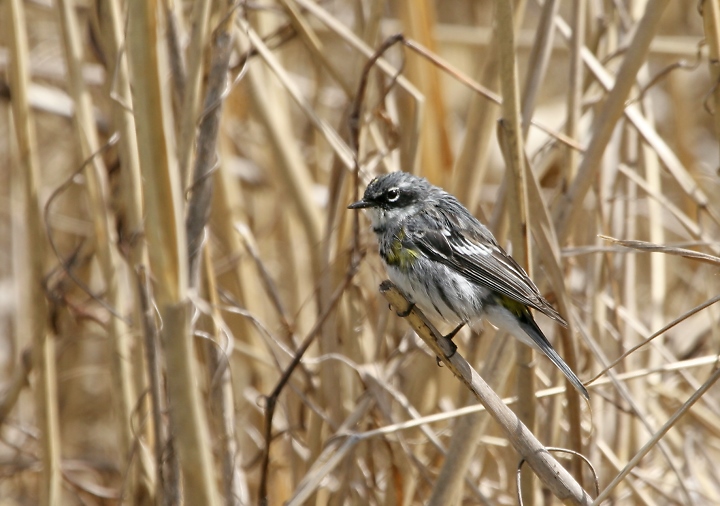
Below three: They have returned. The hordes of Myrtle Warblers again lay claim to their winter home on Assateague Island, Worcester Co., Maryland (10/14/2007).
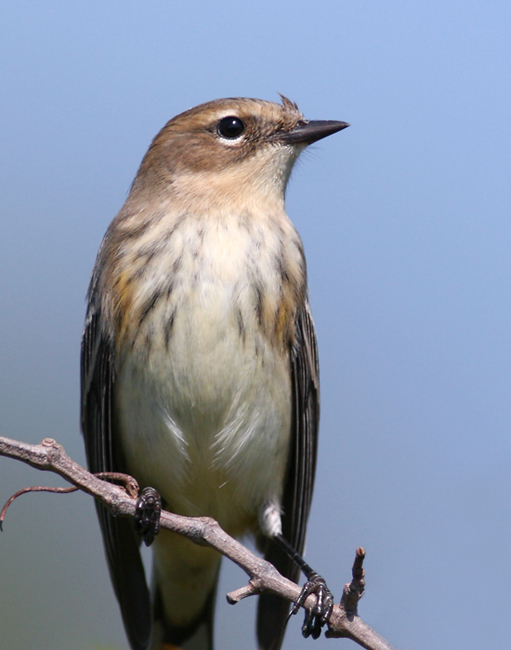
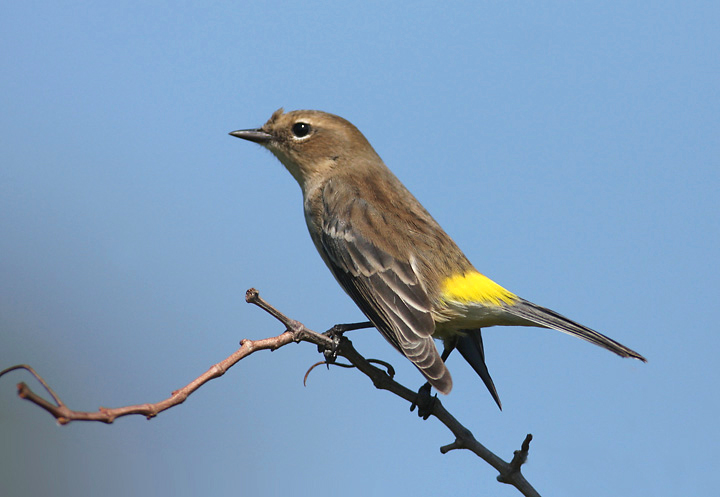
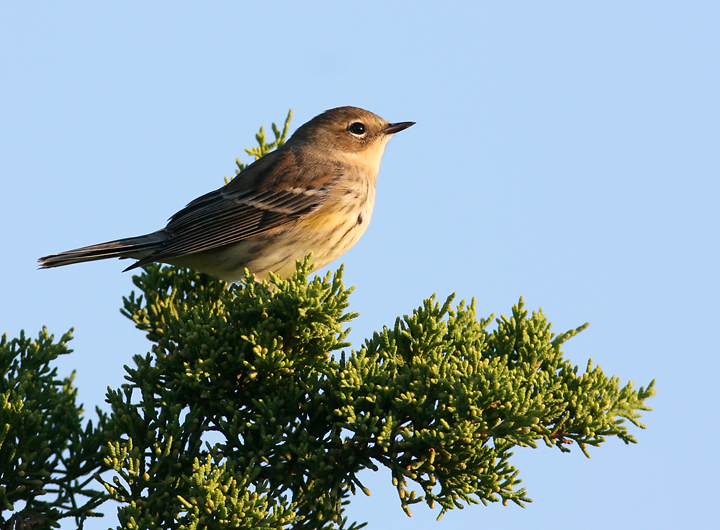
Below: A Myrtle Warbler in Kent Co., Maryland (10/4/2008).
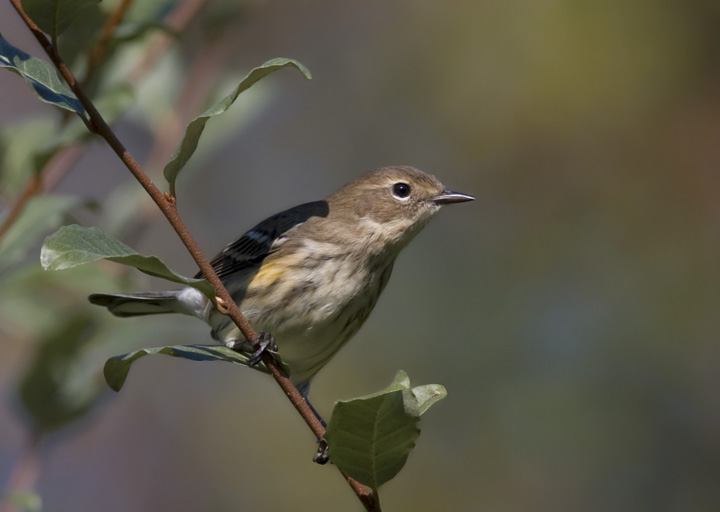
Below: Mikey Lutmerding with a Myrtle Warbler that he rescued after we found it trapped in an Assateague Island public restroom (11/17/2008).
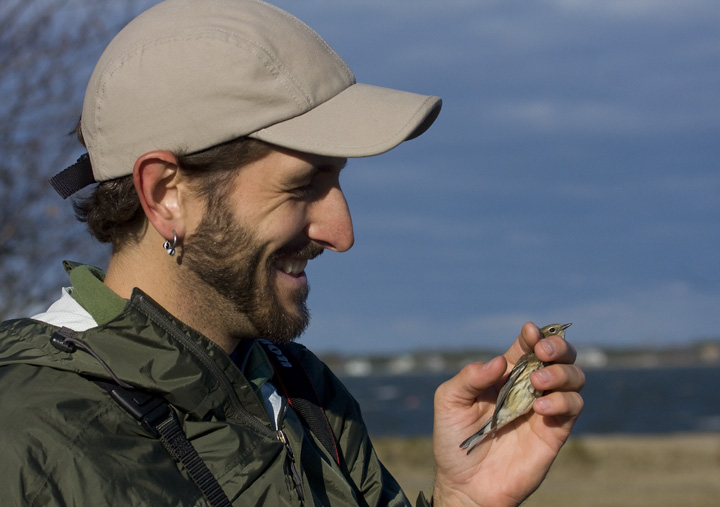
Audubon's Warbler
Below: An Audubon's Warbler in Santa Barbara Co., California (10/1/2011).
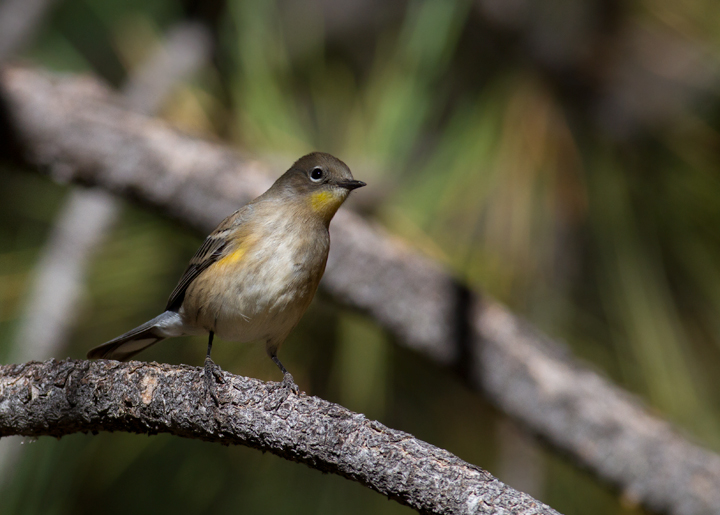
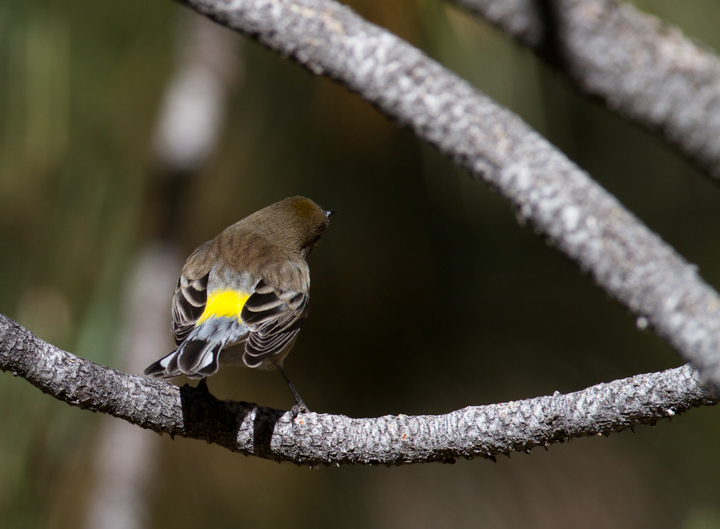
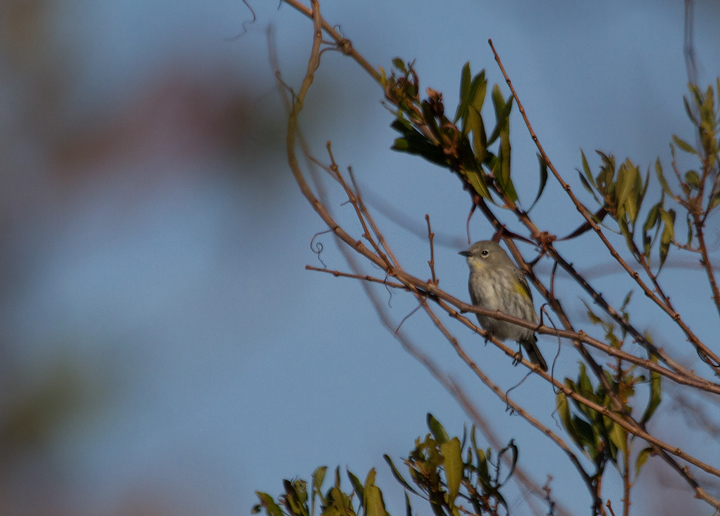
Above and below: An Audubon's Warbler in Bayside Campground, Assateague Island, Maryland (12/3/2011). The western form of Yellow-rumped Warbler is very rare in Maryland and we only have a handful of accepted records. Dan Small and I found this bird in the island of scrubby habitat between A13 and A23.
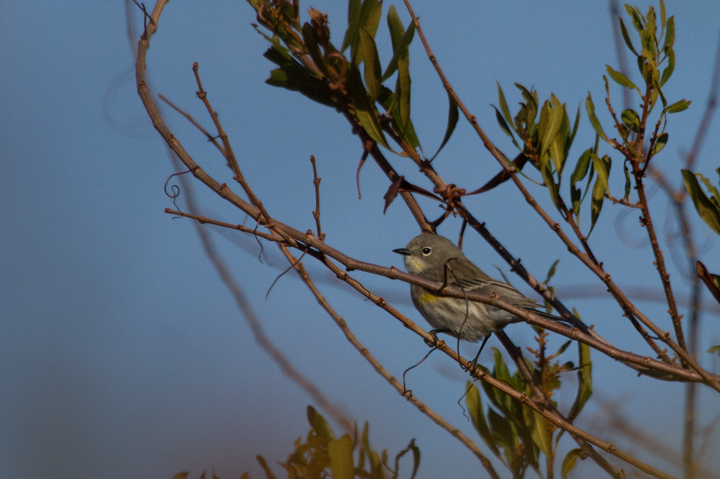
Recording of chipping
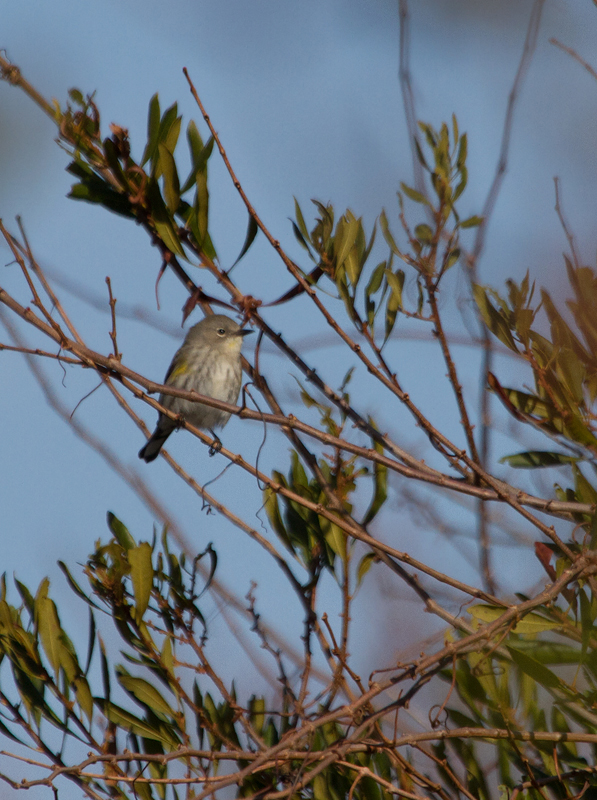
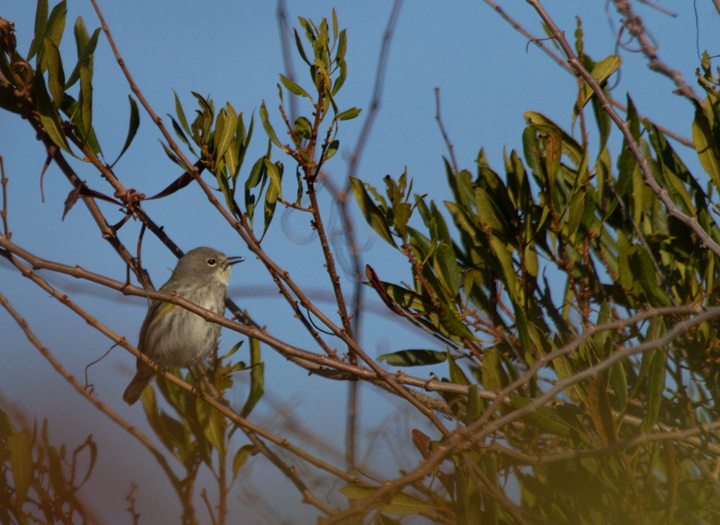
Below: An Audubon's Warbler migrating over the Pacific Ocean off San Diego, California (10/8/2011).
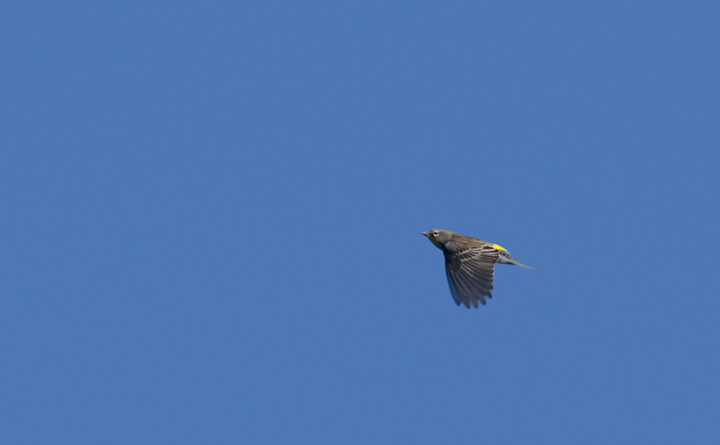
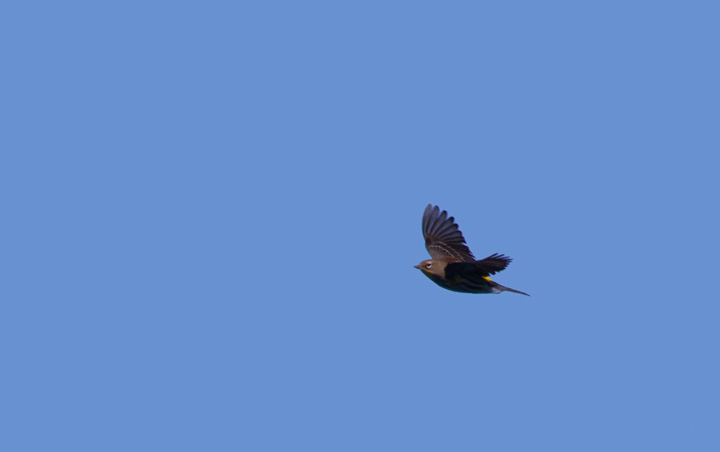
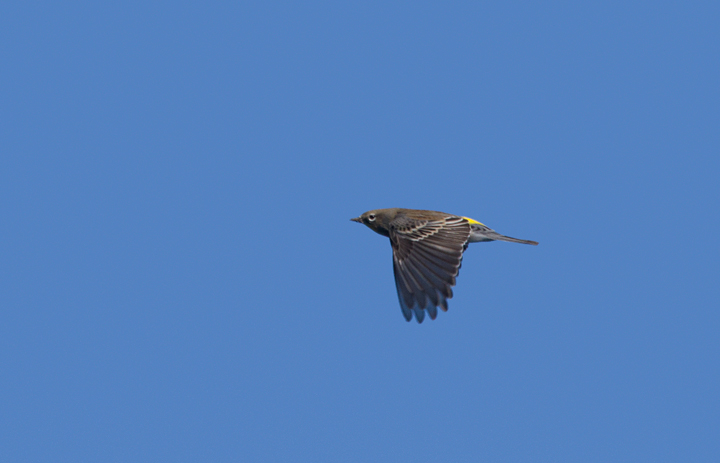
Below: Documentation photo of an Audubon's Warbler photographed at the Glen Riddle development west of Ocean City, Maryland (11/15/2008). I first noted this bird by its distinctive chip, which stood out as odd compared to the hundreds of Myrtles I'd seen all day. I looked up and quickly noted its bright yellow throat, which was rounded on the corners instead of continuing under the auriculars (what I think of as the smiley face). You can see some light color in this photo in the middle of the neck, but this is caused by lighting and was not a continuation of the throat color. The face is plain, with two eye arcs but no white stripe as seen in Myrtle. All field marks were more pronounced in the field. The bird was photographed in low light near the end of the day. This appears to be the 12th report of the species in Maryland, and only two have been reviewed and accepted. (Most have not yet been reviewed).
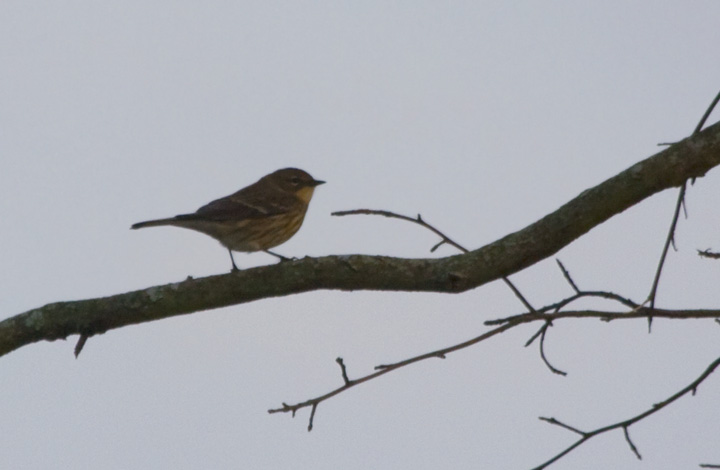
Below: For fun, let's try some rare bird forensics. I've found that in overexposed and underexposed photos, you quickly lose color. However, you can often get a better sense of true color by manually increasing overall (i.e., all color) saturation. While this might be considered "doctoring" a photo, you cannot saturate a color that isn't there. When I saturated this original image, the yellow on the throat quickly becomes strong.
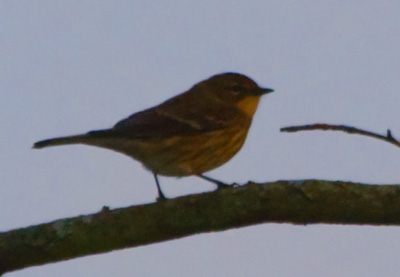
Below: To keep this remotely scientific, here is a random Myrtle Warbler shot with the same high saturation applied. The throat does not become saturated with yellow, while other yellow markings become intensely yellow.
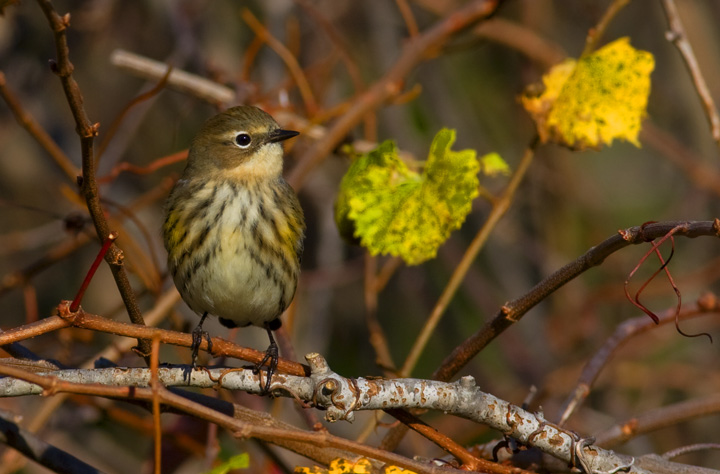
More Myrtle Warblers
Below: A migrant Myrtle Warbler in the pokeweed at Blairs Valley, Washington Co., Maryland (10/3/2009).
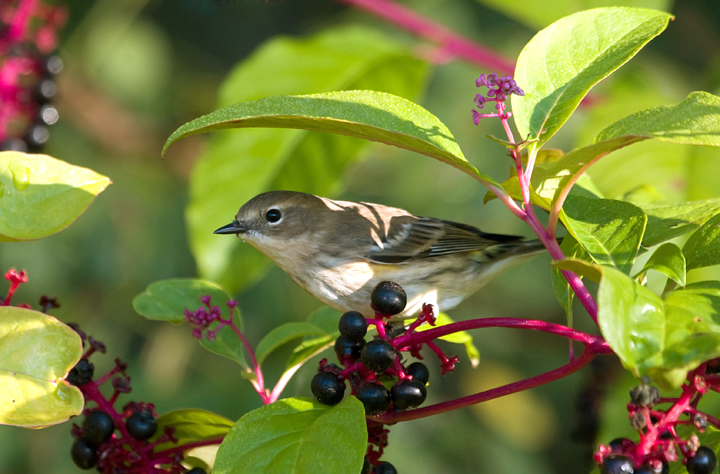
Below: Myrtle Warbler in Somerset Co., Maryland (10/25/2009).
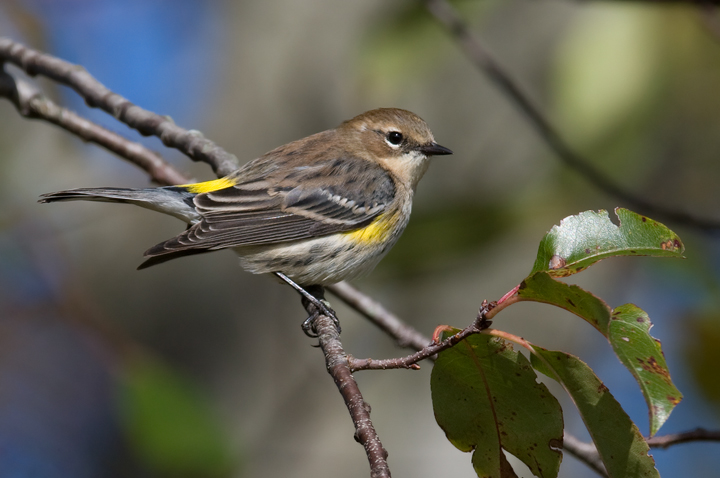
Below: Myrtle Warblers on Assateague Island, Maryland (11/7/2009).
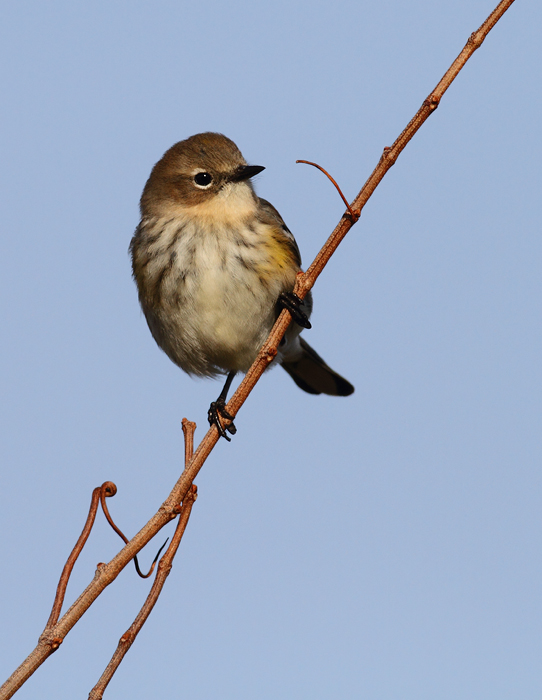
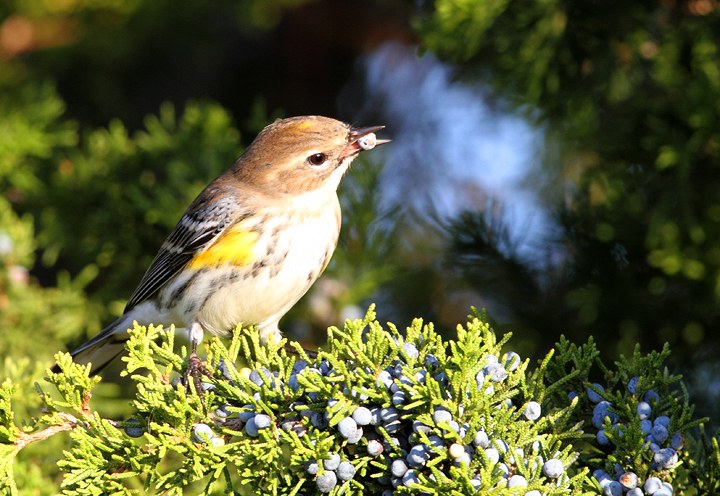
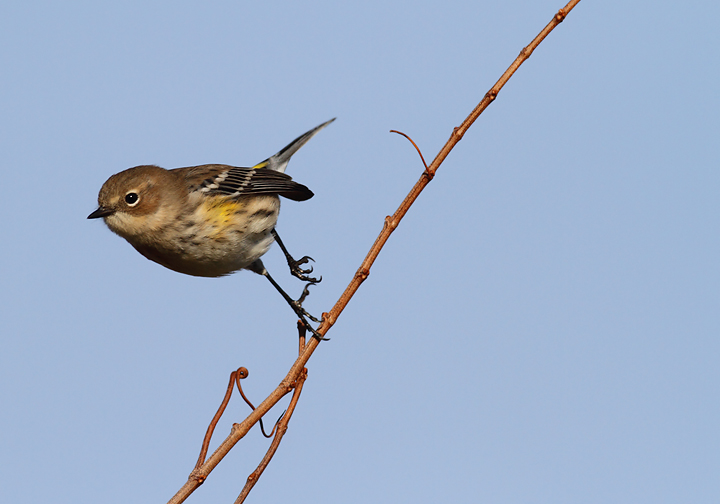
Below: Myrtle Warblers on Assateague Island, Maryland (11/15/2009).
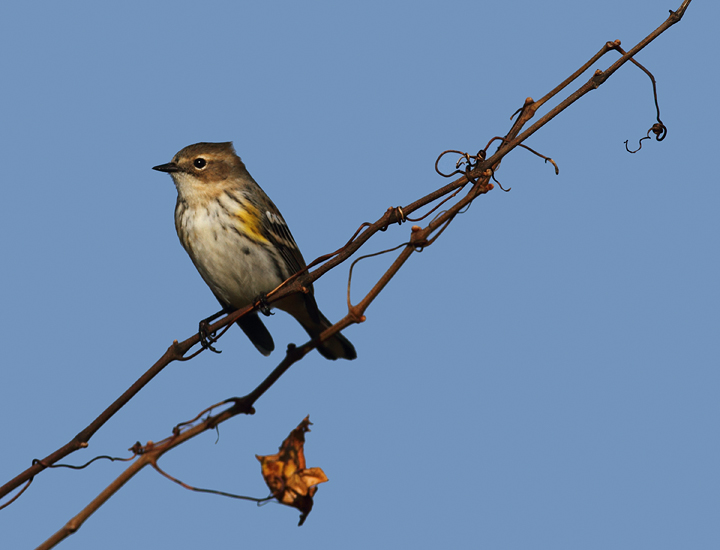
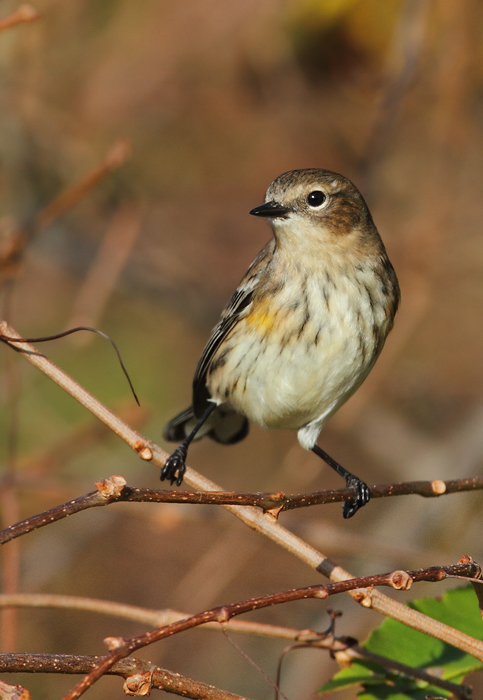
Below: A Myrtle Warbler at Fairmount WMA, Maryland (12/29/2009).
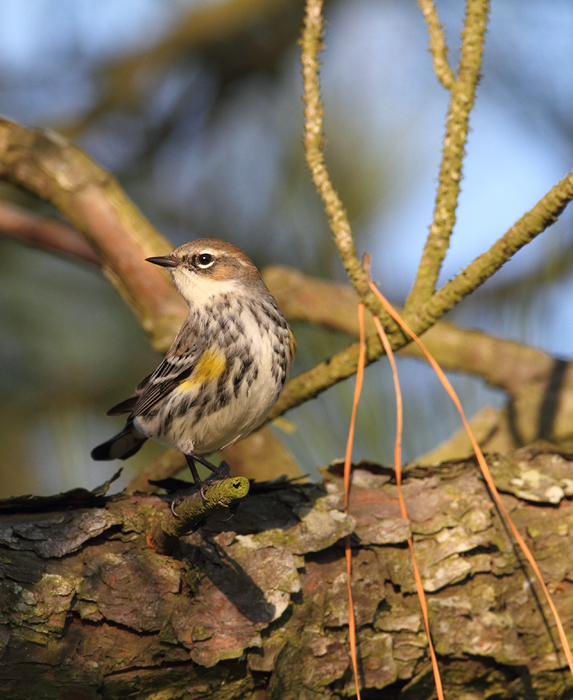
Below: A Myrtle Warbler in Assateague Island State Park, Maryland (11/11/2010).
